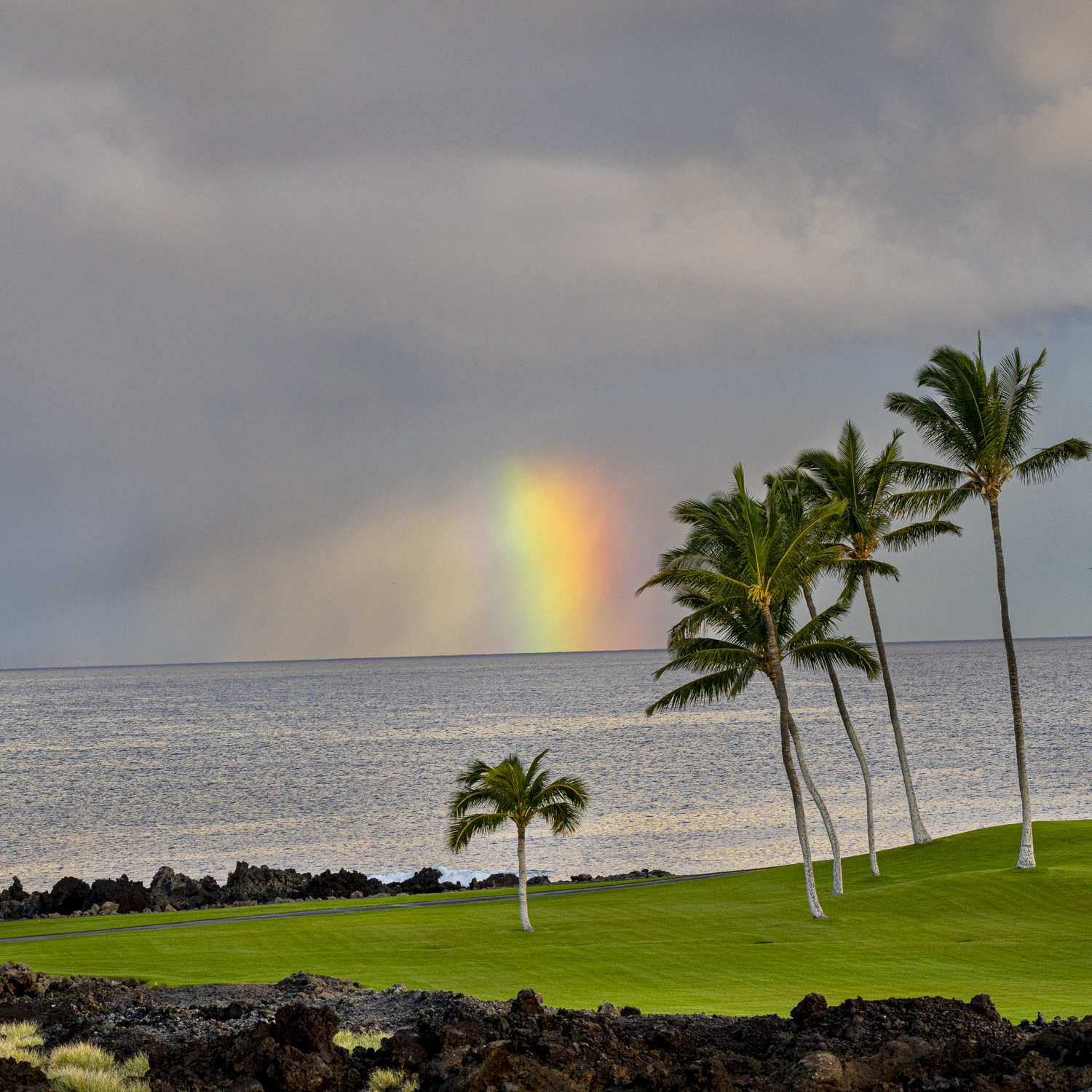Steven Businger, a professor at the University of Hawai‘i’s Department of Atmospheric Sciences, wrote a 2021 academic paper on why Hawai‘i is the rainbow capital of the world. The cultural importance of rainbows for the islands is reflected in the Hawaiian language, which has many words and phrases to describe their manifestations. According to Businger, ‘There are words for Earth-clinging rainbows (uakoko), standing rainbow shafts (kāhili), barely visible rainbows (punakea), and moonbows (ānuenue kau pō), among others.’
So why does Hawai‘i get so many rainbows? It comes down to the way the islands often meet the specific conditions needed for rainbows to appear. Sunlight needs to be shining onto rain uninterrupted from low in the sky – less than 42 degrees above the horizon. According to Businger, Hawai‘is perfectly placed to produce showers when the Sun is low enough in the sky. Its location in the subtropical Pacific ensures the cool trade winds frequently bring showers interspersed with clear skies. Overnight heating by the warm sea surface of cool trade winds ensures showers when the Sun is low in the mornings. Sunshine on the many clear-sky days heating the ground and interactions with the island terrain also cause the trade winds to form more showers by the time the Sun’s low again in the evenings.
Rick Sorensen (Member 1,434) spotted this shaft of rainbow from Hawai‘i’s Big Island. You can think of it as one end of the more familiar semicircular arc, appearing as the sunlight shone on a localised shower beneath a Cumulonimbus offshore. And now you know what to call it: kāhili.



